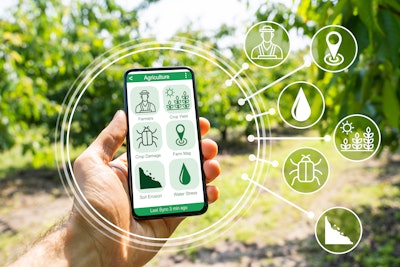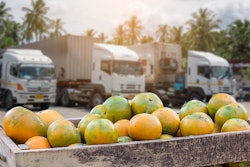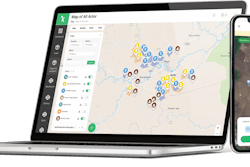
Within the realm of supply chain management, dealing with anything related to food can be tricky, from growing it to ensuring it stays fresh during transport and storage. Food items can spoil quickly, and it’s not always easy to predict how much people will want to buy, especially when taking into consideration seasonal changes, special deals, and overall consumer interest.
Anyone involved in the food industry has to strike a delicate balance between keeping enough supply to meet consumer demand. They must also consider the economic and environmental impacts of either producing too much or not enough.
However, advanced data-collection capabilities are changing the game by providing businesses with valuable insights that revolutionize cold chain logistics. By tapping into real-time information from different sources like IoT sensors, sales records, and weather data, companies can better understand the intricate dynamics involved in matching supply with demand.
Today’s food industry workers can use advanced analytics and predictive modeling techniques to turn raw data into useful insights that can help them make better-informed decisions, such as predicting demand, managing inventory, optimizing routes, and making real-time adjustments. Ultimately, this helps create a cold supply chain that is more efficient, responsive, and sustainable.
Collecting relevant data
Data is the cornerstone of optimizing an effective supply chain, particularly in the cold food and beverage industry where a wealth of data sources can provide critical insights. For instance, Internet of Things (IoT) sensors embedded in storage facilities, vehicles used to transport goods, and product packaging can continuously monitor conditions such as temperature, humidity, and location to ensure optimal conditions are maintained throughout the supply chain.
Moreover, data analysis on sales records — both historical and real-time — helps businesses more accurately forecast consumers’ demand patterns, which enables more robust demand forecasting and inventory planning. Even external factors, such as weather data and market trends, can influence demand and supply dynamics. As such, everything related to producing, storing, and transporting food must be considered for data collection.
Still, data collection is only the first step. Ensuring the integrity and quality of the data collected is incredibly important, as inaccurate or incomplete data can lead to flawed analyses and poor decision-making. Implementing comprehensive data governance frameworks, standardizing data formats, and establishing seamless integration across different systems and partners are essential for maintaining data integrity.
Moreover, building a scalable and secure data infrastructure is crucial to handling the immense volumes of data generated throughout the supply chain. This infrastructure should not only store and process data but also facilitate seamless access and analysis, empowering stakeholders to make informed, data-driven decisions.
Analyzing data for supply chain insights
With advanced analytics techniques and high-quality data on hand, logistics companies can better optimize their supply chain management strategies. By combining historical sales data with external factors such as weather patterns, promotional campaigns, and market trends, machine learning models can accurately predict future demand for specific products and regions.
This approach to predictive analytics emboldens supply planning and optimization strategies, enabling more precise inventory management and distribution decisions. Analytical models can then determine the optimal inventory levels at various points in the supply chain, minimizing the risks of over- or under-producing.
Modern data analytics can also facilitate continuous monitoring and real-time adjustments. Tracking shipments, monitoring conditions, and promptly responding to disruptions or changes in demand can mitigate spoilage, delays, and other costly issues, ensuring a seamless and agile cold supply chain.
Enhancing sustainability and reducing waste
The food industry is one of the main drivers of sustainability. Although past studies and reports have shown the food industry to be a source of excess consumer waste, incorporating modern AI and data-driven decision-making capabilities into our processes stands to revolutionize the industry’s approach to mitigating food waste.
The integration of advanced data collection and artificial intelligence (AI) helps make demand forecasting and inventory management more precise, thereby significantly reducing the amount of unsold or expired products that create excess waste. Additionally, data-driven route optimization and transportation planning decrease fuel consumption and associated greenhouse gas emissions, aligning supply chain operations with sustainability goals. For example, identifying disparities in temperature or handling issues that lead to product damage during transport can inform businesses to implement more preventive measures and reduce overall spoilage.
Beyond waste reduction, data can also facilitate the implementation of circular economy principles, such as exploring opportunities for reusing or repurposing byproducts or packaging materials. Advanced AI and data analytics capabilities can also assist regenerative agriculture by analyzing the composition and flow of materials throughout the supply chain, allowing companies to identify opportunities for closed-loop systems, further minimize waste, and promote sustainability.
Overcoming challenges and considerations
While the potential benefits of data-driven supply chain management are compelling, we must address several challenges and considerations. For one, predictive analytics are still at their inception, and there aren’t enough regulatory policies in place to comprehensively protect industry stakeholders’ data. Robust frameworks and protocols must be introduced to safeguard sensitive information and maintain stakeholder trust.
The cold food and beverage supply chain often involves numerous moving parts and multiple partners, necessitating seamless data integration across diverse entities. Fostering collaboration and data-sharing agreements is vital for unlocking optimization potential.
Change management is another critical aspect, as transitioning to data-driven strategies may require significant cultural and operational shifts. Effective communication, training, and stakeholder engagement are necessary to overcome resistance and ensure successful adoption.
Furthermore, it’s important to remember that data-driven optimization is an ongoing journey, not a one-time solution. Continuous monitoring, evaluation, and refinement of data models and processes are necessary to adapt to changing conditions and emerging opportunities.
The future of data-driven cold chain logistics
The future of data-driven cold chain logistics is brimming with possibilities as emerging technologies continue evolving and integrating with existing systems. AI and machine learning will continue to play an increasingly prominent role, enabling more sophisticated predictive models and real-time decision-making capabilities.
Moreover, the integration of blockchain technology holds the potential to revolutionize supply chain transparency and traceability. By creating a decentralized, immutable record of transactions and data, blockchain can enhance trust, accountability, and information sharing among supply chain partners, facilitating more effective collaboration and optimization efforts.
The technology available to us today, while incredibly advanced compared to those used in the past, is still technically operating at the worst it ever will. AI and other technologies used by the food logistics industry will only improve as time goes on.
As the adoption of data-driven strategies becomes more widespread, industry-wide collaboration and data sharing will become increasingly crucial. By pooling data resources and leveraging collective insights, companies can better understand market trends, consumer behaviors, and best practices, driving innovation and continuous improvement across the entire cold chain logistics ecosystem.


















